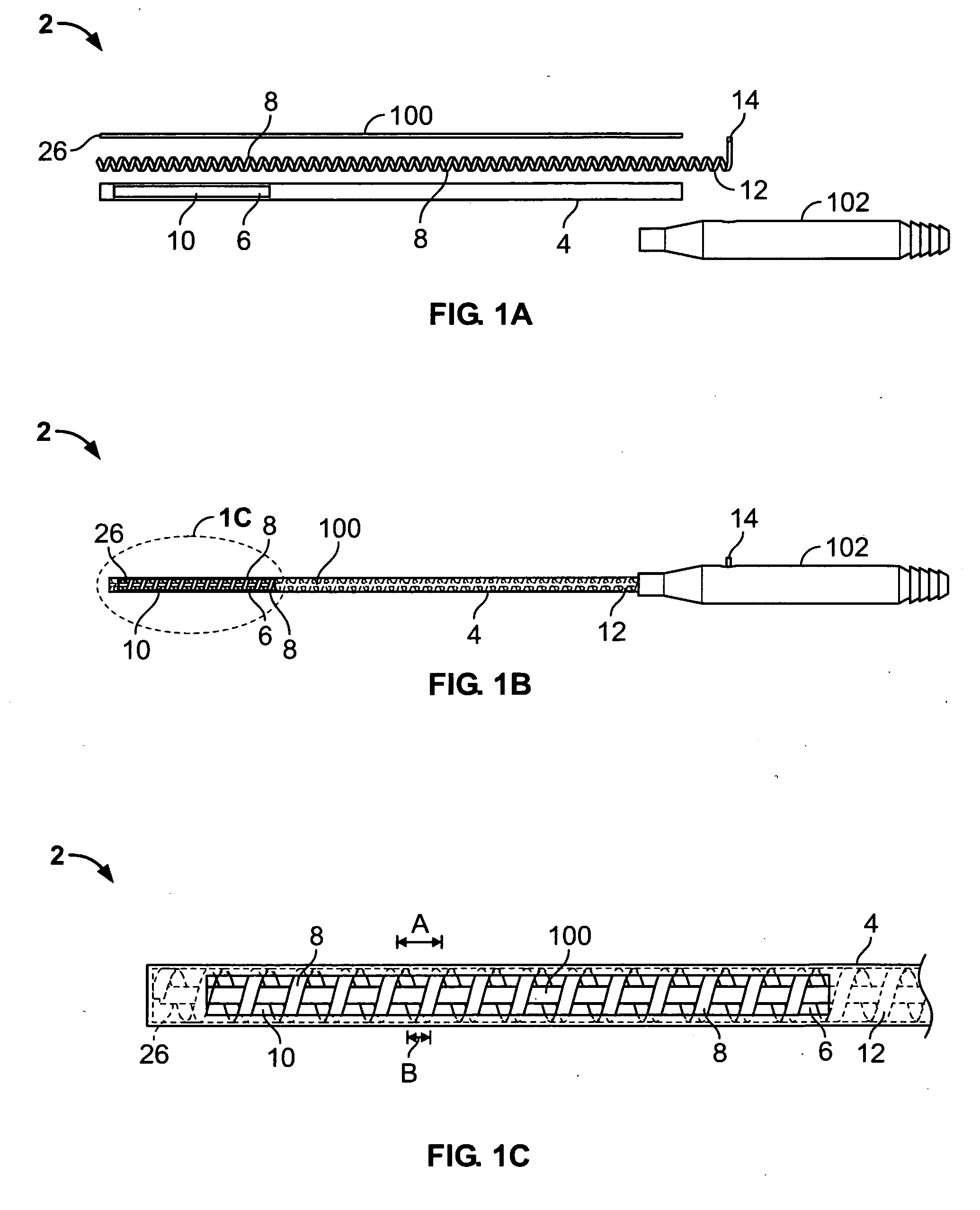Methods of coagulating tissue
a tissue and coagulation technology, applied in the field of coagulation tissue, can solve the problems of inability to direct coagulation, inability to selectively ablate desired soft tissue structures, and inability to isolate preserved tissue structures from targeted regions, so as to facilitate less invasive surgery and less invasive treatment
- Summary
- Abstract
- Description
- Claims
- Application Information
AI Technical Summary
Benefits of technology
Problems solved by technology
Method used
Image
Examples
Embodiment Construction
[0024] A need exists for integrated vacuum coagulation probe devices and methods that create contiguous, curvilinear, transmural lesions in the atria to treat atrial fibrillation, atrial flutter, ventricular tachycardia, or other arrhythmia substrate. In addition, such devices and methods could simplify and improve other soft tissue coagulation procedures by ensuring intimate tissue contact while precisely and effectively heating a region of soft tissue. For example, tendon shrinking during arthroscopic procedures and articular cartilage fragment removal from bony tissue are facilitated and controlled with the embodiments of the invention. The embodiments of the invention also enable pharmacologically modifying tissue structures with localized administration of agents to cross-link or otherwise adapt tissue to specific needs.
[0025] The needed technology also could enable certain procedures to be performed less invasively through limited incisions that previously required large, ope...
PUM
 Login to View More
Login to View More Abstract
Description
Claims
Application Information
 Login to View More
Login to View More - R&D
- Intellectual Property
- Life Sciences
- Materials
- Tech Scout
- Unparalleled Data Quality
- Higher Quality Content
- 60% Fewer Hallucinations
Browse by: Latest US Patents, China's latest patents, Technical Efficacy Thesaurus, Application Domain, Technology Topic, Popular Technical Reports.
© 2025 PatSnap. All rights reserved.Legal|Privacy policy|Modern Slavery Act Transparency Statement|Sitemap|About US| Contact US: help@patsnap.com



